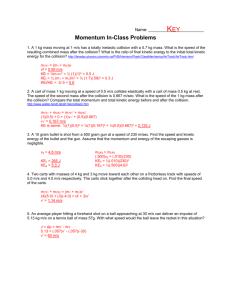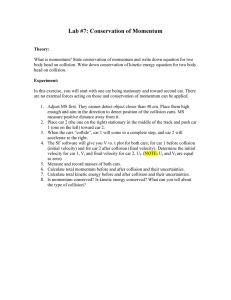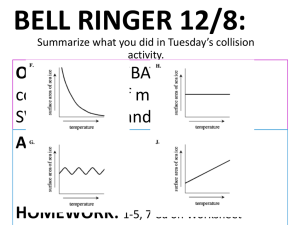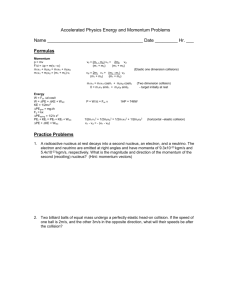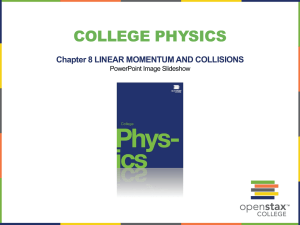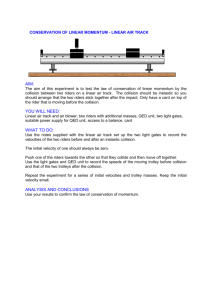Honors Physics Ch. 7 Linear Momentum Sections 7.2, 7.5, & 7.6
advertisement
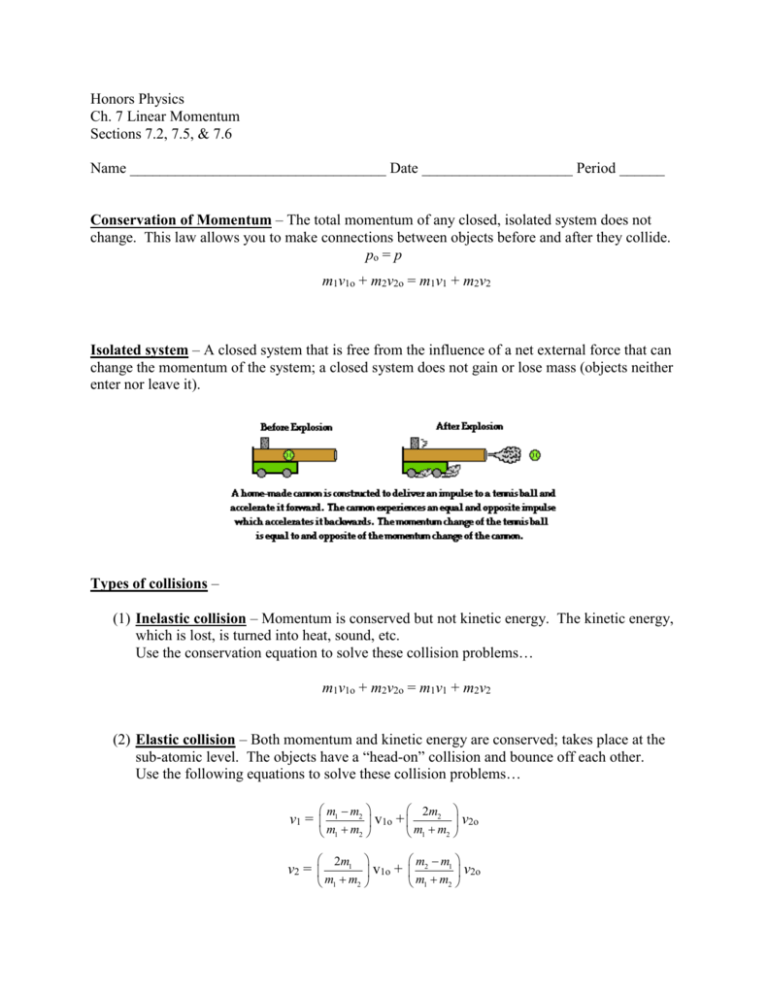
Honors Physics Ch. 7 Linear Momentum Sections 7.2, 7.5, & 7.6 Name __________________________________ Date ____________________ Period ______ Conservation of Momentum – The total momentum of any closed, isolated system does not change. This law allows you to make connections between objects before and after they collide. po = p m1v1o + m2v2o = m1v1 + m2v2 Isolated system – A closed system that is free from the influence of a net external force that can change the momentum of the system; a closed system does not gain or lose mass (objects neither enter nor leave it). Types of collisions – (1) Inelastic collision – Momentum is conserved but not kinetic energy. The kinetic energy, which is lost, is turned into heat, sound, etc. Use the conservation equation to solve these collision problems… m1v1o + m2v2o = m1v1 + m2v2 (2) Elastic collision – Both momentum and kinetic energy are conserved; takes place at the sub-atomic level. The objects have a “head-on” collision and bounce off each other. Use the following equations to solve these collision problems… m m 2m 2m m m 2 v1 = 1 2 v1o + v2o m1 m2 m1 m2 1 2 1 v2 = v1o + v2o m1 m2 m1 m2 (3) Perfectly (Completely) Inelastic collision – Two objects collide and stick together so that their final velocities are the same; only momentum is conserved. Use the following equation to solve these collision problems… m1v1o + m2v2o = (m1+ m2) v (4) Explosion – The two objects are together and then separate; recoil. It is like a backwards perfectly (completely) inelastic collision. The collision starts from rest (vo = 0). Use the following equation to solve these types of collision problems… vo(m1+ m2) = m1v1 + m2v2
